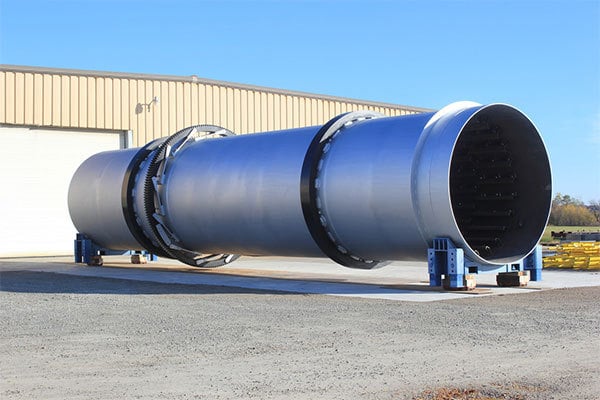Potassium sulfate dryers are in growing demand as the booming SOP fertilizer market drives increased need not only for this popular alternative to MOP, but also for the equipment required to process it into a market-ready product—particularly during drying, a critical step in both extraction and fertilizer production.
Rotary dryers remain the industry standard for drying potash materials. As the SOP market accelerates, those planning to develop a drying line should consider the following factors to ensure optimal performance and product quality.
The Role of Drying in SOP Fertilizer Production
Drying plays an essential role in bringing a potassium sulfate fertilizer to market in two ways:
Drying Raw SOP
First, drying is often employed during the initial mining process used to extract the compound from complex salts.
In this setting, drying prepares the material for use as a feedstock in downstream processes.
Drying Finished SOP Fertilizer
Second, drying is an essential finishing step in the pelletizing/wet granulation process – a technique commonly used to transform the potassium-bearing compound into a premium fertilizer product.
Challenges With Drying SOP
Although SOP is similar to MOP, the two potassium compounds are not identical. This, combined with the fact that SOP processing is not nearly as well established as MOP processing, necessitates a customized approach to drying the material.
For these reasons, FEECO recommends those beginning their entry into the SOP market do two things:
Work With a Qualified Drying Expert
Drying any novel material requires a high level of expertise to achieve the desired result without infringing on product quality.
This is especially true when it comes to potash materials, as they often present some unique challenges that will need to be addressed through the dryer design. In this setting, expertise is invaluable to expediting the road to commercialization and designing a dryer that will perform efficiently and reliably for the long term.
Further, experience is also helpful in minimizing potash dryer emissions, a growing effort in the industry.

FEECO Potash Dryer awaiting shipment
Test SOP Drying
As a high-value alternative to MOP, meeting the physical and chemical product specifications expected by the market is paramount. SOP producers must develop a process that can reliably and efficiently produce a feedstock or fertilizer product with the exact specifications their customers demand.
Moisture content plays an especially important role in meeting expected quality, as it has an influence on several aspects of the product. If a fertilizer product is under dried, for example, producers not only risk higher transportation costs, but also potential mold growth and caking or spoiled product. In contrast, if the product is over dried, product color can be affected and the product may be more prone to attrition and dust.
Since SOP is fairly new to the market, dryer feasibility testing and process development play an integral role in scale-up.
Testing in a facility such as the FEECO Innovation Center offers customers the opportunity to confirm feasibility, as well as work out process variables and gather the data necessary for scale-up. The following data points are refined during testing in the Innovation Center to identify the unique combination of parameters that will allow the producer to reach the precise moisture content and quality they’re looking for:
- Dryer temperature
- Retention/Residence time
- Drum slope
- Drum speed (RPMs)
- Air volume
- Feed rate
- Feedstock characteristics
Additional operating data can also be gathered, including gas sampling and analysis, emissions, and burner fuel usage. Flight (material lifter) testing is also available to determine optimal flight design for the specific source of SOP.

FEECO Flight/Lifter Simulator
In addition to dryer testing, testing is also available for SOP granulation.
Conclusion
Drying is an essential step in bringing SOP to market as a fertilizer product, and for this, potash producers rely on rotary dryers. Because SOP is a novel material and behaves differently from MOP, FEECO recommends producers work with a drying expert and thoroughly test their drying process.
FEECO is the potash industry’s preferred supplier for custom rotary dryers and coolers. All FEECO dryers are designed around the specific source of material to be dried, with comprehensive testing available in our Innovation Center. We also offer an extensive parts and service program for keeping potash dryers running their best. For more information on our potash dryers and services, contact us today!

